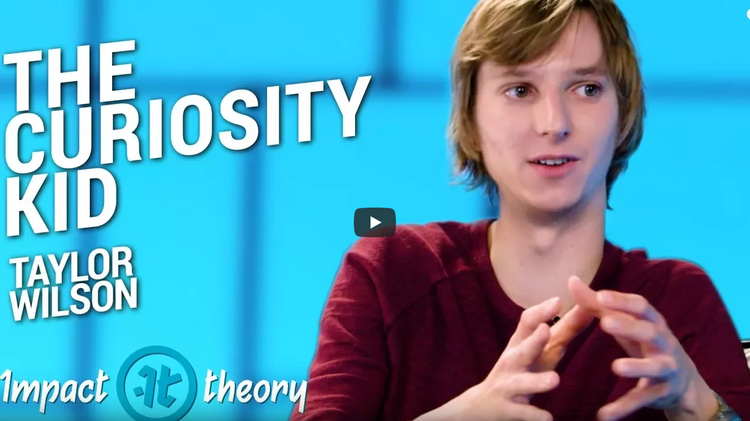How to Recognize Hidden Opportunities

In a previous essay I wrote about the three elements that comprise serendipity:
- Curious Tinkering, (the pursuit of ideas you find intrinsically interesting)
- Casual Collisions (sharing your ideas with others in random settings )
- Subtle Pings (seemingly random signals that pop into your awareness)
You can read that essay here.
In this essay we'll explore subtle pings and how to recognize opportunities from them.
I recently got a new job, which I love by the way, but the story behind how it happened is really strange. Back in March 2020, around the time when the Coronavirus pandemic started to affect the world, I got a message on LinkedIn from a former colleague asking if I was available to have a call with the CEO of her company to discuss data.
I've worked in the field of data (also known as business intelligence) for more than a decade so I figured why not? I also recognized the message as a subtle ping. It’s seemingly random and harmless and I lose nothing by following up.
At this point I wasn't looking for a new job; besides the request seemed more like a consulting call than a job interview. Regardless, I make it a habit to follow up on as many subtle pings as I can. Some of them lead nowhere, but that doesn't bother me. it's the ones that turn into opportunities that I'm really after.
So I had the call, it went well, I enjoyed the conversation, but afterwards I didn't follow up. Why? Like I said, at the time I wasn't really looking for a new job.
Fast forward a month, and everything has changed. My company has announced upcoming layoffs in a few weeks and I start to get that helpless feeling again. You see, just two months before, I had survived another round of layoffs and the time between when they were announced and when they actually happened was the most anxiety-ridden period of my professional career.
I did not want to go through that again.
Stoicism advises that when we’re feeling anxious we should focus only on the things we can control, and forget everything else, so I decided the best thing to do is to start looking for another job. Even if I survive the layoffs again, at least I won't feel so helpless.
As I started my job search, I was reminded of the consulting call I had with the CEO of the company I now work for. This time however, I recognized an opportunity, because I realized I could consider the call a job interview and if so, I could try and summarize our discussion into a pitch.
So I wrote him an email with my summary, not expecting anything, but two days later he replied saying that he loved the email and that there was a position open at his company if I was interested. I, of course, said yes and got the job a few weeks later.
How was I able to match those subtle pings to my job search situation and see the opportunity?
The technical term for this cognitive process is called structural alignment which simply means your ability to match subtle pings in the environment (the message from my colleague and later the call) with a context where it can be meaningful (the job search)
While that term sounds quite interesting, it’s more of an explanation of what happens automatically in your mind not a prescription of what to do. What we really want to know is how we can train our mind so that structural alignment happens more often? We have to dig a little further to figure that out.
What are subtle pings anyway?
Subtle pings don't really look like opportunities. They seem pretty random actually. They can be ideas we're exposed to from articles or books we read, podcasts we listen to, posts on our social media feed, conversations we have, new projects or initiatives at work, random invitations, new events we find interesting, or things that emerge from our curious tinkering.
For example, when we see a job posting, we mentally match the requirements with our professional experience and we see how closely they align. This is exactly how structural alignment works. But a job description is an opportunity that is specifically designed to be easily recognized. That's not a subtle ping, that's a very obvious ping.
In order to turn a seemingly random, subtle ping into an opportunity we need some creative thinking. We need to be able to deconstruct the ping and discern multiple meanings from it. We then need to be able to connect it to other ideas or circumstances where it makes sense.
This is what I did with the call. At first I saw it as a consulting call not a job interview. The meaningful context wasn't there either, so there was no structural alignment and I didn't notice the opportunity.
However when the context changed, and I looked beyond the obvious, I saw it as an interview and immediately made the connection to my job search. Looking beyond the obvious is a skill we can practice through something called re-purposing.
The magic of re-purposing
Re-purposing happens when we use something for an unintended purpose, like when you use pliers as a hammer or a chair as a ladder. It's actually a very natural process for humans because of our ability to instantly deconstruct a concept into a higher level of abstraction.
In the case of pliers as a hammer, we simply deconstruct the concept of "pliers" to a more abstract concept of "something heavy and sturdy" which then makes it easy for us to see it as a hammer. This by the way is the heart of creativity and innovation, but we're not going to explore that vein here.
In the case of opportunity recognition, we use re-purposing to transform a subtle ping that doesn't match our context at first sight into something that does, or we transform the context in such a way that it matches the ping. Sometimes simply saying "hey, maybe this will work" and giving it a chance is enough.
Here's an example.
Suppose you hear about a professional event happening in your city, but it's for lawyers and you're a data scientist who's trying to break into the field. They make no mention of data science in the program. How can you still attend?
If you only relied on the program description, you'd find zero structural alignment, but when you notice a mention about the "future of the legal profession" in the brochure you see an opening. What if you could re-purpose that element from something meant for lawyers to something that includes data science?
So you ask the organizers if you can give a 5-minute lighting talk on the topic of "how data science will impact the future of the legal profession." There is a very good chance that they will say yes. Someone who doesn't think this way, would have easily given up when they didn't see anything specific to data science in the brochure.
Re-purposing is a skill you can easily practice from the comfort of your home. Open up LinkedIn and look for professional events in your area. Find a few of them, the more unrelated to your field or interests the better, and then go through each one and find 1-3 ways you can get in by re-purposing one or more of your skills to fit their narrative or by re-purposing their description to fit your skills.
With enough training, re-purposing will become a habit and opportunities will start popping up everywhere you look.




